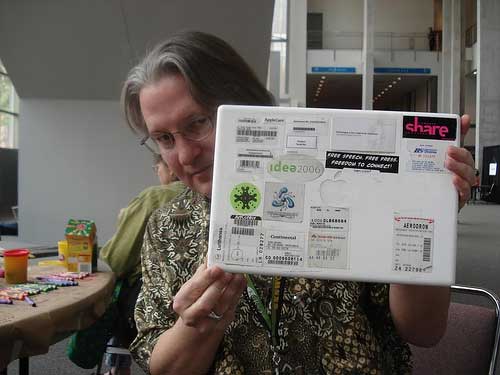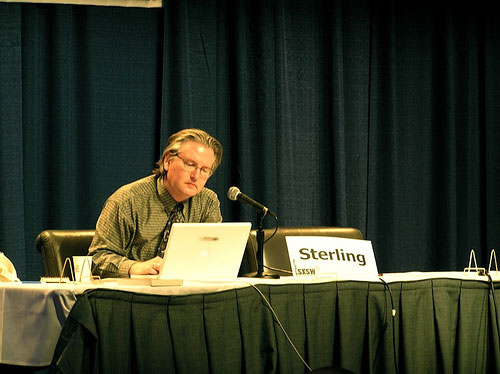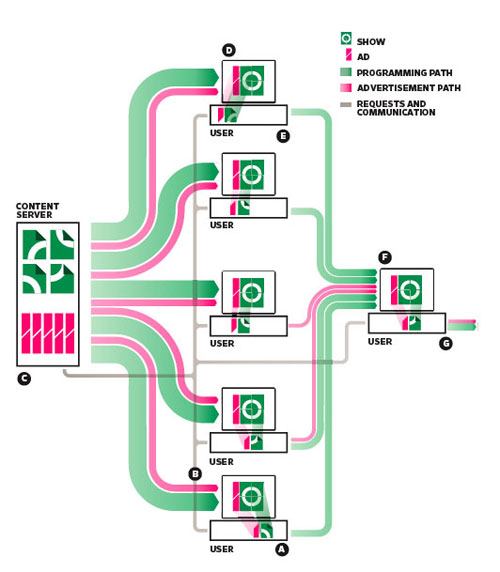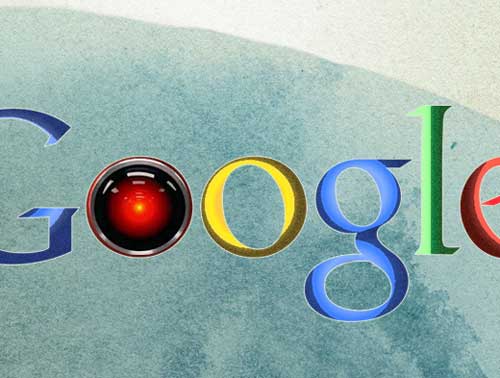Category: future
-
The Most Futurisitic Thing You’ll See All Day
-
The Many Faces of Google
“Here is an attempt to provide a fuller picture of the elephant in nearly every company’s board room”
-
Bruce Sterling SXSW 2007

Photo by BrianfitI really enjoyed listening to Bruce Sterling’s rant from SXSW 2007. MP3 27MB 59 Mins. For some reason this post got lost in my ‘drafts’ section in WordPress. Better late than never…
-
Eric Schmidt – Right on the Money
You rarely see a guy as on point as Eric Schmidt. This is an incredibly fascinating talk. If only the interviewer would stop making noises.
-
“You don’t have to predict the future when you live in it”

Photo by janbrasnaBruce Sterling writes:
In 1998, I had it figured that the dot-com boom would become a dot-green boom. It took a while for others to get it. Some still don’t. They think I’m joking. They are still used to thinking of greenness as being “counter” and “alternative” — they don’t understand that 21st-century green is and must be about everything — the works. Sustainability is comprehensive. That which is not sustainable doesn’t go on. Glamorous green. I preached that stuff for years. I don’t have to preach it anymore, because it couldn’t be any louder. Green will never get any sexier than it is in 2007. Because, after this, brown will start going away.
Full Washington Post piece
Printable (aka readable) version
Bruce Sterling’s Blog: Beyond the Beyond
-
Joost – TV on the Internet for real

How Joost’s hybrid peer-to-peer system works. After Joost makes a show available, the first users to request it (A) query the network at large (B) to see whether peers can provide the program. If they can’t, the request goes to a content server (C), which streams the show, interspersed with individually targeted ads, directly to each viewer’s screen (D). While the users watch, short segments of the show and the ad are saved to their local hard disks (E). In this way, the entire show and a variety of ads are seeded throughout the network. So when another user (F) requests the same title, that show, along with a targeted ad, comes not from the server but from the network, one segment at a time. Once again, fragments of the show and ad are stored to the new user’s hard disk (G), ready to be streamed to others. – Ted Greenwald
I had a chance to play with Joost this weekend and it’s incredible. Daniel Salber (no url?) did a fantastic job of porting it to the Mac so quickly. I was impressed with how its not really that buggy and its alpha…
First random thoughts on Joost:
Wow, this is actually TV on the internet. People have been talking about it for ages but this is the first time I’ve seen anything approach traditional TV in terms of quality and ease of use on my computer. It’s full screen, good quality, near instant on, it’s free, and it has high quality content. If Joost opens its platform to allow people to upload their stuff this I’ll be all over this thing like a fat kid on a smartie. If they keep it closed off they just won’t be able to compete with traditional TV.
I love the idea of never having to store video content locally when you can just query it any time from online. The hybrid P2P model of video distribution is also fascinating and it appears to be working!
This Wired article on Joost explains everything…
I recommend you try it out.
-
another multi touch UI video ( wall screen version )
computers, computing, demo, input, multi touch, multitouch, research, the future, touch screen, user interface, wall screen, wow
-
Bruce Sterling: Climate Change

Photo by: AkuppaBruce Sterling on Climate Change:
Climate change is not gonna be combatted through voluntary acts of individual charity. It’s gonna be combatted through some kind of colossal, global-scaled, multilateral, hectic, catch-as-catch-can effort to stop burning stuff, suck the burnt smoke out of the sky, and put the smoke back into the ground. That’s not gonna get done a little green teacup at a time, because we’ve been doing it for two centuries and we don’t have two centuries to undo it.
“Reducing emissions” is a wrongheaded way to approach it. If “reducing emissions” is the goal, then the best technique available is to drop dead. The second-best technique is to go around killing a lot of people. Nobody’s got a lighter eco-footprint than a dead and buried guy. He’s not walking around leaving footprints: the Earth is piled on top of him.
We’re past the point where reduction helps much; we will have to invent and deploy active means of remediation of the damage. But from another, deeper perspective: we shouldn’t involve outselves in lines of development where the ultimate victory condition is emulating dead people. There’s no appeal in that. It’s bad for us. That kind of inherent mournfulness is just not a good way to be human. We’re not footprint-generating organisms whose presence on the planet is inherently toxic and hurtful. We need better handprints, not lighter footprints. We need better stuff, not less stuff. We need to think it through and take effective action, not curl up in a corner stricken with guilt and breathe shallowly.
Super fascinating Bruce Sterling: State of the World 2007 thread at The Well
